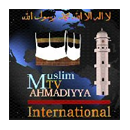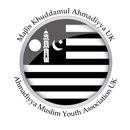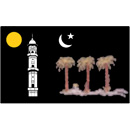Organisational Structure
The Ahmadiyya Muslim Community is a world wide Community and to ensure that it functions properly there is an organisational structure in nearly every country of the world and a structure overseeing all the countries. It is all the same structure, whether International, National, Regional, or Local.
The Khalifa
The Supreme Head of the Jama’at is Hazrat Khalifatul Masih V, Hazrat Mirza Masroor Ahmad, who is not only the Spiritual Head, but also the Administration Head. He directs and guides the Jama’at’s activities and all the institutions and associations within the Jama’at (community) are under him.
To oversee all the activities in every country, there are two Central bodies known as Anjuman (headed by Nazir A‘la) and Tahrik-i-Jadid Anjuman (headed by Wakil A‘la). They oversee the activities in each country and report to Hazrat Khalifatul Masih V.
Anjuman Ahmadiyya
In January 1906 Hazrat Mirza Ghulam Ahmad, may peace be upon him, instituted the Central Ahmadiyya Council to look after the administrative affairs of the Jama’at. The first president of this council was Hazrat Maulana Noor al-Din, who was appointed by Hazrat Mirza Ghulam Ahmad, may peace be upon him,
The head of this Council is called Nazir Ala (Executive Director). The Anjuman consists of various Nazarats (departments) like Treasury, Education, Justice, Properties, Propagation, Pensions, Guidance, Publication, Finance, and General Welfare. A Nazir(Director) heads each of the departments. The head offices of the Council are located in Qadian & Rabwah.
Anjuman Tehrik-i-Jadid
Under Divine guidance in 1934, Hazrat Musleh Maud, Khalifatul Masih II introduced a scheme called “Tehrik-i-Jadid” (New Scheme). The primary purpose of this scheme is to open new missions and construct mosques around the world.
Waqfe Jadid
On December 27th, 1957 The Khalifat al-Masih II started the blessed project called Tehrike Waqfe Jadid (The New Dedication). The primary objective of this project was to look after the spiritual upbringing of the members living in the rural communities. The secondary objective was to bring the message of Islam to Hindu population of the country.
Missionaries
To help in the spiritual development of the members, the Khalifa appoints Missionaries to each country. These Missionariesare then given a Region(s) by the Amir to oversee. They are independent of the local Jama’ats and ensure that the local Jama’ats and members are following the instructions given by the Centre and help the members develop their relationship with Allah and become pious Muslims.
Auxiliary Organisations
To further help the members there are sub-organisations within the Jama’at which function at International, National and Local levels. On the International and National side, the Head is known as Sadr (president) and they are chosen by the members and appointed by Hazrat Khalifatul Masih V.
The various sub-organisations are:-
- Majlis Ansarullah: Male members of the Jama’at above 40 yrs. Local President is called Zaeem.
- Majlis Khuddamul Ahmadiyya: Male members of the Jama’at from 15 to 40 years old. Local President is called Qaid.
- Majlis Atfalul Ahmadiyya: A sub-organisation of Khuddam for boys aged 7 to 15 years old.
- Lajna Imaillah: Women members from 15 years and above. Local President is also called Sadr.
- Nasiratul Ahmadiyya: A sub-organisation of Lajna for girls aged 7 to 15 years old.
All these Auxiliary organisations have Regional Sadrs and they have their own Aamala both regionally and locally.
Organisational Set-up in each country
The Ahmadiyya Community has spread all over the world and in each and every country the set up is the same. Hazrat Khalifatul Masih V has appointed an Amir (National President) for every country. The Amir is the Administration Head of theJama’at in that country. The Amir heads the National Aamila (Executive Body) which consists of National Secretaries of various departments. To help the Amir, he has appointed Regional Amirs to look after a Region on his behalf. A Region will consist of a number of local Jama’ats.
In each country a local Jama’at will be formed and every member will be attached to the nearest Jama’at. The local Jama’atwill elect a local President – with the approval of the Amir. The local President will have a local Aamala (executive body) to assist him to run the local Jama’at.
An Aamala whether National, Regional, local or a sub-organisation will consist of various Secretaries and will be headed by a President. The Secretaries could include:-
General Secretary; Finance Sec.; Tabligh (Preaching) Sec.; Tarbiyyat (Training) Sec.; Talim (Education) Sec.; Jaidad (Property) Sec.; Ziafa’at (Hospitality) Sec.; etc.
These posts are either appointed or through election. No one should desire a position, but on given a post should not refuse it, instead they should try their best to put their trust in Allah.

















